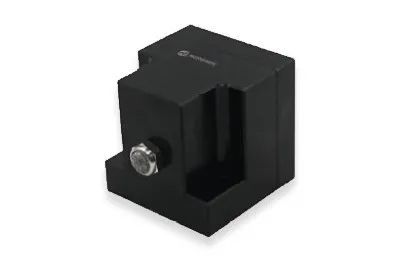The function and principle of the 223.991.01 Seitz sealing solenoid valve.
223.991.01 Seitz sealing solenoid valveFunction and principle

The 223.991.01 Seitz sealing solenoid valve is a valve that opens or closes based on electromagnetic force. It is used in air or liquid lines. There are many structures and types, but the basic principle of operation is the same. The control circuit inputs an electrical signal, which generates a magnetic signal on the solenoid valve, driving the solenoid to produce an action, resulting in the opening or closing of the valve.
The 223.991.01 Seitz sealing solenoid valve differs from other valves (manual, pneumatic, hydraulic, machine-controlled, etc.) in that its outstanding feature is the ease of achieving automatic control. Solenoid valves are used in some water purifiers, which may require automatic control or linkage. The solenoid valve uses a step action to directly pilot the solenoid valve, which can be classified into normally closed solenoid valves and normally open solenoid valves based on whether it is in an open or closed state when power is off. When the solenoid valve is normally closed, after the coil is energized, the armature drives the valve core under the action of electromagnetic force, allowing fluid to flow through the auxiliary valve on the main valve cup, reducing the pressure on the main valve cup. When the pressure on the main valve cup drops to a certain value, the armature drives the main valve cup open, allowing the medium to circulate. After the coil is energized, the electromagnetic force disappears, and the armature resets due to its weight.
223.991.01 Seitz sealing solenoid valve: At the same time, depending on the pressure of the medium, the main and auxiliary valves can be tightly closed. In the normally open solenoid valve, when the coil is energized, due to suction, the moving iron core moves down, the auxiliary valve closes under pressure, and the pressure in the main valve cup rises. When the pressure rises to a certain value, the pressure difference in the main valve cup, due to electromagnetic force, pushes the moving iron core to close the main valve seat, thus closing the valve. When the coil is energized, the electromagnetic attraction is zero, and the auxiliary valve opens again due to the action of the spring, allowing fluid to flow through the auxiliary valve on the main valve cup, reducing the pressure on the main valve cup. When the pressure on the main valve cup drops to a certain value, the pressure difference pushes the main valve cup open, allowing the medium to circulate. Tracing the history of solenoid valves, to date, domestic and foreign solenoid valves can be classified into three main categories based on principles (i.e., direct acting, step pilot), and further divided into six subcategories based on structural and material differences (direct acting diaphragm structure, step heavy plate structure, pilot diaphragm structure, direct acting piston structure, step direct acting piston structure, pilot piston structure).
223.991.01 Seitz sealing solenoid valveWhen the solenoid coil is energized, the electromagnetic force causes the closing part to detach from the valve seat, opening the valve; when power is off, the electromagnetic force disappears, and the spring closes the valve against the valve seat, closing the valve. It can operate normally under vacuum, negative pressure, or zero pressure, but the diameter generally does not exceed 25mm. It is a principle that combines direct and pilot action; when there is no pressure difference at the inlet and outlet, the power and electromagnetic force directly push the pilot valve and the main valve closing components upwards, opening the valve. When the pressure difference at the inlet and outlet is activated, the solenoid valve is energized, the pressure in the lower chamber of the main valve rises, and the pressure in the chamber drops, thus using the pressure difference to push the main valve upwards; when power is off, the pilot valve uses spring force or medium pressure to push the closing part downwards, closing the valve. High-pressure operation can also be performed under zero pressure difference or vacuum, but it requires a larger power and needs to be installed horizontally. After energizing, the electromagnetic force opens the pilot hole, causing the chamber pressure to drop rapidly, forming a pressure difference in all directions, and the fluid pressure pushes the closing part upwards, opening the valve; when power is off, the spring force closes the pilot hole, and the inlet pressure rapidly forms a low pressure around the valve through the bypass hole, pushing the closing part downwards and closing the valve. The upper limit of the fluid pressure range is high, and it can be installed arbitrarily (customization required) but must meet the conditions of fluid pressure difference.
Related News
What impact does the F011068 Norgren valve group pilot valve have?
2022-12-23 11:19
What is the function of the 191.019.01 Saichi SEITZ pilot valve?
2022-09-20 13:37

